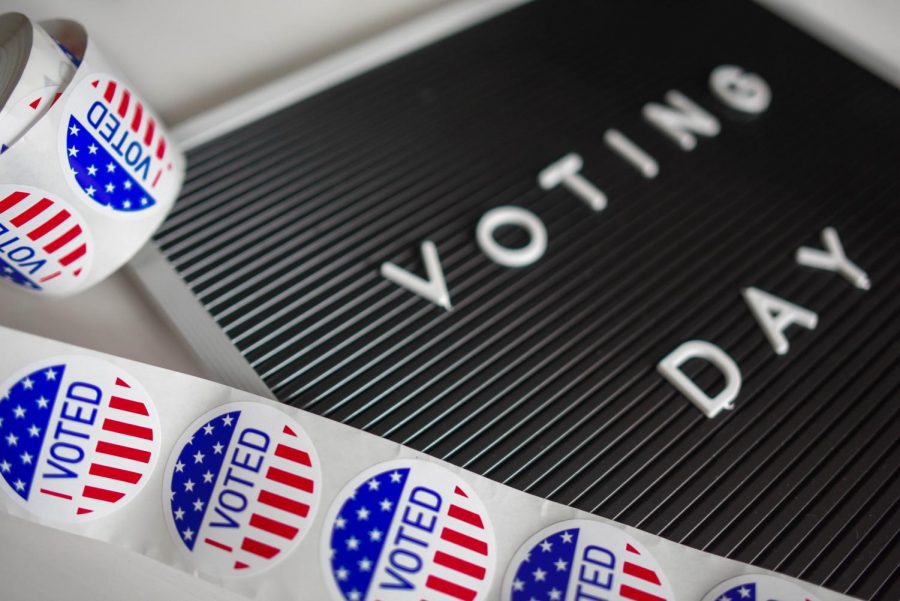Vote. Here’s How
Read up on the ins and outs of starting to vote in 2020
The right to vote is fundamental in any democracy. But for many people it wasn’t free. Suffrage has been fought for tooth and nail by many in American history. Much of this happened not so long ago and protesters were beaten, arrested and brutalized during the fight for equality.
Still, many eligible citizens choose not to vote, and more remain in the dark about the what, when, where and how of the process.
Now, more than ever, the right to cast your ballot is important. Elections are what sway the country and its decisions about every national issue affecting every person in the United States in one way or another.
But voting isn’t simply choosing who will be the president on the other side of the country. There are also opportunities to vote for local officials such as city council members and governors, and laws that will affect things like the allocation of funding for schools and other public services.
As the fall semester rolls into a national presidential election, there are also many incoming first year students who just turned 18 and are now old enough to vote! But there might be a few very important questions. The most common question might be, “how do I vote?” The more pressing question that even seasoned voters are going to have will be, “how do I vote during a national health crisis?”
Who can vote?
To vote in California, a voter must:
- be a United States citizen
- be a resident of California
- be at least 18 years old or older on Election Day
- not be currently in state or federal prison or on parole for the conviction of a felony
- not be currently found to be mentally incompetent to vote by a court
All of these requirements rule out people under the age of 18, undocumented persons, and people who have been convicted of a felony. But even if someone can’t vote this election, there are still ways to participate, like petitioning, raising awareness and more.
How to register to vote
Californians can register to vote either online, in person at your county elections office or by mail by filling out and mailing a national voter registration form to your local elections official. A voter registration form can be picked up at the post office, library or DMV office. The deadline to register in person, online and by mail is 15 days before election day. The state of California also offers same day voter registration which allows voters to cast a provisional ballot within 14 days of an election, including election day. This means that the ballot will be counted once it has been verified by the county registration office. If you aren’t sure if you are already registered to vote you can take 30 seconds to check your registration status.
How will COVID affect voting?
Efforts to limit the spread of coronavirus might result in a limit of in person voting. Currently, fewer polling places will be allowed open in exchange for earlier scheduled openings starting Oct. 31 until Nov. 3 for at least eight hours per day; and on election day, Nov. 3, 7 a.m. to 8 p.m.. A big effort to expand access to absentee voting can be seen statewide as Gov. Gavin Newsom ordered that each county mail ballots to every active registered voter.
Is voting by mail secure?
President Donald Trump claims that absentee voting will lead to voter fraud, and that as the country votes by mail, “Mail boxes will be robbed, ballots will be forged & even illegally printed out & fraudulently signed.” However, according to The Heritage Foundation’s online database of election fraud Over the last two decades, about 0.00006% (143 cases) of total vote-by-mail votes cast were fraudulent. Not only is voting by mail a secure method of casting your ballot, but it is also nothing new. Many California voters have chosen to do so during elections in previous years. Historically, California has allowed mail-in voting since the early 1920’s, with an expanding amount of acceptable reasons to request an absentee ballot. In 1978 California became the first state to allow any registered voter to vote remotely without needing an excuse. Since then, there has been a steady increase in voters who choose to vote by mail.
Does my vote even count?
Although many people will swear that their vote won’t make a difference, nothing could be further from the truth. According to the United States Election Project, during the 2016 presidential election nearly half of all eligible voters did not vote, all of which amounted to 231,556,622 people who could have completely changed the turnout of the election.
There are a little more than two months until the election. This election determines who will lead us during the remainder of the coronavirus pandemic and the abundances of issues that stem from it. The next leaders will handle major civic reform as cities like Portland, Oregon see their fiftieth day of protests in response to the death of George Floyd. There is a lot riding on the 2020 presidential election, and it is not only the right, but the responsibility of every eligible citizen to vote.


